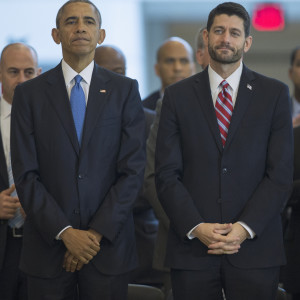Americans often think of our country as being one of great opportunity – where anyone can rise from very modest circumstances, if they work hard and make good choices. We believe that often remains true.
But, for children and youth growing up in poverty, such upward mobility in America is too rare. Indeed, just 30 percent of those growing up in poverty make it to middle class or higher as adults. Though we’ve made progress in reducing poverty over the past several decades, our poverty rates are still too high and our rate of economic advancement for poor children has been stuck for decades. That is an embarrassment for a nation that prides itself on everyone having a shot at the American Dream.
What can we do to reduce poverty and increase economic mobility? In our polarized and poisoned political atmosphere, it is hard to reach consensus on policy efforts. Both progressives and conservatives want lower poverty; but progressives want more public spending programs to improve opportunity and security for the poor, while conservatives generally argue for more responsibility from them before providing more help.
Even so, progressives and conservatives might not be as far apart as these stereotypes suggest. The two of us – one a conservative Republican and the other a progressive Democrat – were recently part of an ideologically-balanced group of 15 scholars brought together by the American Enterprise Institute and the Brookings Institution. Our charge was to generate a report with policy proposals to reduce poverty and increase upward mobility. An additional goal was simply to see whether we could arrive at consensus among ourselves, and bridge the ideological divide that has so paralyzed our political leaders.
Together we decided that the most important issues facing poor Americans and their children are family, education and work. We had to listen to each other’s perspectives on these issues, and be open to others’ truths. We also agreed to be mindful of the research evidence on these topics. In the end, we managed to generate a set of policy proposals we all find compelling.
To begin with, the progressives among us had to acknowledge that marriage is a positive family outcome that reduces poverty and raises upward mobility in America. The evidence is clear: stable two-parent families have positive impacts on children’s success, and in America marriage is the strongest predictor of such stability. Therefore marriage should be promoted as the norm in America, along with responsible and delayed child-bearing.
At the same time, the conservatives among us had to acknowledge that investing more resources in the skills and employability of poor adults and children is crucial if we want them to have higher incomes over time. Indeed, stable families are hard to maintain when the parents – including both the custodial mothers and the (often) non-custodial fathers – struggle to maintain employment and earn enough to support their families. Investing in proven, cost-effective, education and training programs such as high-quality preschool and training for jobs in high-growth economic sectors can improve the skills and employability of kids from poor families and lift them out of poverty through work.
Another important compromise was that progressives acknowledged that expecting and even requiring adults on public assistance to work can reduce poverty, as we learned in the 1990s from welfare reform; programs today like Disability Insurance, among others, need reforms to encourage more work. And reforms that encourage innovation and accountability would make our public education programs for the poor more effective at all levels. We need more choice in public K-12 education (through charter schools) and a stronger emphasis on developing and retaining effective teachers, while basing our state subsidies to higher education institutions more heavily on graduation rates, employment, and earnings of their graduates.
Conservatives also had to acknowledge that requiring the poor to work only makes sense when work is available to them. In periods or places with weak labor markets, we might need to create jobs for some by subsidizing their employment in either the private or public sector (as we did during the Great Recession). We agreed that no one should be dropped from the benefit rolls unless they have been offered a suitable work activity and rejected it. And we also need to “make work pay” for those who remain unskilled or can find only low-wage jobs – by expanding the Earned Income Tax Credit (especially for adults without custody of children) and modestly raising the minimum wage.
We also all agreed on other topics. For instance, work-based learning – in the form of paid apprenticeships and other models of high-quality career and technical education – can play an important role in raising both skills and work experience among poor youth and adults. And, if we raise public spending for the poor, we need to pay for it – and not increase federal deficits. We all agree that reducing certain tax deductions for high-income families and making our retirement programs more progressive are good ways to finance our proposals.
As our report demonstrates, it is possible for progressives and conservatives to bridge their differences and reach compromises to generate a set of policies that will reduce poverty and improve upward mobility. Can Congress and the President do the same?

